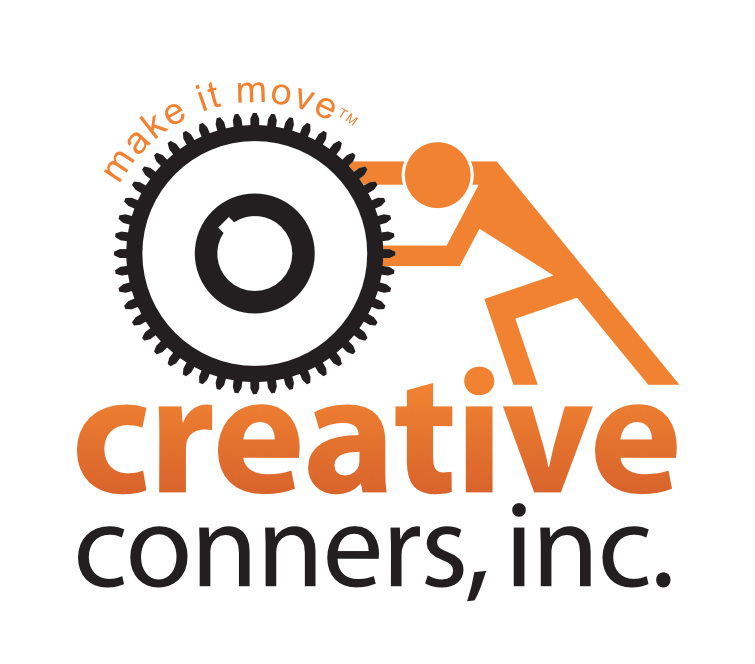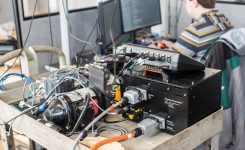Programming, Spikemark, Tips
Spikemark Killer Features
Are You The Spikemark Sensei In Your Dojo?
Were you using Spikemark when it was called Avista? Many Spikemark programmers can make their automation perform like a show dog without breaking a sweat. But have you kept track with all the exciting bells and whistles that have made their way onto the platform?
In 2018 we released more than a dozen updates. In 2019, we’re already on our fifth update. The updates are part of our work to improve the software, add features, and increase stability for the variety of Spikemark uses.
Let's dig in and explore some of the most powerful updates that you may not realize are already baked into Spikemark.
But First
Let’s establish a bit of background and operational understanding. Spikemark is the brains behind Creative Conners automation ecosystem. The ecosystem is built around three major components: the machine (Revolver, Pushstick, Spotline, Floorpocket Etc), the Stagehand motion controller (Stagehand Pro, Stagehand Apprentice, Stagehand FX), and a PC running Spikemark software. For the sake of simplicity I’ve ignored the Showstopper 3 emergency stop components - but it is also critically important.
Spikemark is a Windows based program that allows you to use our catalog machines or your own home brewed machines to automate a show. It is the human interface to the powerful engineering embedded within a Stagehand controller.
It's flexible enough to communicate with third-party show control systems, to run stack cues, and perform non-linear timed or position linked cues. Spikemark includes a 3D stage visualizer to see what moving and where its going. It is literally the crown jewel of our product catalog and the linchpin of our system.
Most importantly to many users however is the cost. It is free to download, free to learn, and free to use for your show (free as in beer).
What’s New (ish)
Some of the lesser-known, more recently added features of Spikemark are
- PosiStageNet Communication
- OSC Communication
- Persistent Positioning
- User Authentication
- Easy Stage Presets
PosiStageNet Communication
If you have not heard of PosiStageNet (or PSN), you will soon. It is a communication protocol originally developed by entertainment lighting manufacturers, MA Lighting and VYV. It was originally intended to track 3d motion on stage - which is incredibly helpful when followspotting a performer or for use with 3D projection mapping.
The great thing is it's an open standard. Many different companies using it and furthering his development. Check out https://www.posistage.net/ to get a list of all the ways it’s being utilized.
Everyone from media servers manufacturers, to lighting companies and automation manufacturers. With PosistageNet, all these players can share position data from motion tracking cameras, light curtains, and encoders.
What does this mean for you? You've got a whole new way to communicate position data to an entire array of show control systems. All the effects on stage can become directional and move in sync with one another.Create an immersive show or exhibit where the environment (scenery, lights, sound, projection) bends and move with a performer and the audience. PosiStageNet communication makes all of that possible.
In Spikemark, you are able to send position data of any number axis to any device that can listen to PosiStageNet. We've seen this to use on a massive spinning scenic unit that needed accurate 3D positioning output to a projection.
What Do You Know About OSC?
You might not know the letters but you've likely used software and devices that implement it. OSC is the backbone protocol used in popular software tools like Figure 53’s Qlab and ETC’s EOS platform.
Like PosiStageNet communication, Spikemark can output position data to any device that can listen to OSC. Your moving scenery can trigger Qlab lighting, projection, or even sound cues.
No more hoping an actor will find their light. Put them on a moving platform, link the platform's position to a lighting cue, and now lights, scenic, and performers move together.
Or track a projected image on a roll drop projection surface. Qlab or other projection mapping software will know how to mask and track the image as the surface goes through its range of motion (staying perfectly tune to its timing, speed, and acceleration).
Persistent Positioning
This one isn't new but it's still a major quality of life improvement. Persistent positioning is Creative Conners' solution to mitigate the risk of position loss due to a power failure (or an accidentally kicked out power cable).
All Creative Conners Stagehand motion controllers use incremental encoders. Stagehands detect position, direction and speed based on a “homed” position established when the device is installed. All position data is relative to this“homed” position. If the stored “homed” position is lost the automation system does not know where it is relative to its overall travel.
Here lies the beauty of persistent positioning. Persistent position records the last position of an axis in the Stagehand’s memory. In case of power loss, position data is restored when the Stagehand is powered back up. No re-homing needed.
It’s is a little detail and doesn't require any work on the part of the user. It can be a lifesaver when the janitor turns off the power overnight before the next day's rehearsal.
All Creative Conners Stagehand motion controllers use incremental encoders. Stagehands detect position, direction and speed based on a “homed” position established when the device is installed. All position data is relative to this“homed” position. If the stored “homed” position is lost the automation system does not know where it is relative to its overall travel.
Here lies the beauty of persistent positioning. Persistent position records the last position of an axis in the Stagehand’s memory. In case of power loss, position data is restored when the Stagehand is powered back up. No re-homing needed.
It’s is a little detail and doesn't require any work on the part of the user. It can be a lifesaver when the janitor turns off the power overnight before the next day's rehearsal.
User Authentication
Are you a Creative Conners user at a school, church, or another venue where many people have access to the automation gear? We've seen automation systems installed everywhere from high schools to Broadway. In all of these environments there are a multitude of staff, technicians, performers, and even students may need access to the space.
It's important that only trained and competent users are able to move automated set pieces. It is also important to limit the ability of some users to change show files and only run a show. This is where user authentication comes in handy.
Spikemark takes advantage of Windows user account feature to allocate access and privileges to different users. It's as simple as logging into Windows with the right user account to either have full control (create and modify the show file) or only limited access to run a show or presets.
A school can quickly set up multiple user accounts with different privileges based on need or competency. Teachers can have run-only access during class time. The technical director can build new show files or modify presets during rehearsals and performances. Each User Group has access and no one is entirely locked out.
It's important that only trained and competent users are able to move automated set pieces. It is also important to limit the ability of some users to change show files and only run a show. This is where user authentication comes in handy.
Spikemark takes advantage of Windows user account feature to allocate access and privileges to different users. It's as simple as logging into Windows with the right user account to either have full control (create and modify the show file) or only limited access to run a show or presets.
A school can quickly set up multiple user accounts with different privileges based on need or competency. Teachers can have run-only access during class time. The technical director can build new show files or modify presets during rehearsals and performances. Each User Group has access and no one is entirely locked out.
Easy Stage Presets
Stage presets go hand-in-hand with user authentication. They are perfect to easily set up of a particular stage “look”. Do you need to spin the turntable to turn to 230 degrees often without running through your entire cue stack? Or do you have a “all off stage” look that is used at the end of every night’s rehearsal?
Presets let you jump to that finished look with the push of an onscreen button. Presets are displayed in the visualizer as the final stage position.
It's great for the janitorial staff or Drama teacher that just needs to get the stage into a particular look without jumping through cues jogging multiple machines individually.
And So Much More
Spikemark has been refined over more than 15 years and is continuously updated.
Technical directors and scenic designers use the Visualizer during production meetings to show how the scenery will move during a show.It is the perfect teaching tool for a stagecraft or automation class.
These features and so many more are free to download and use to Make It Move.





